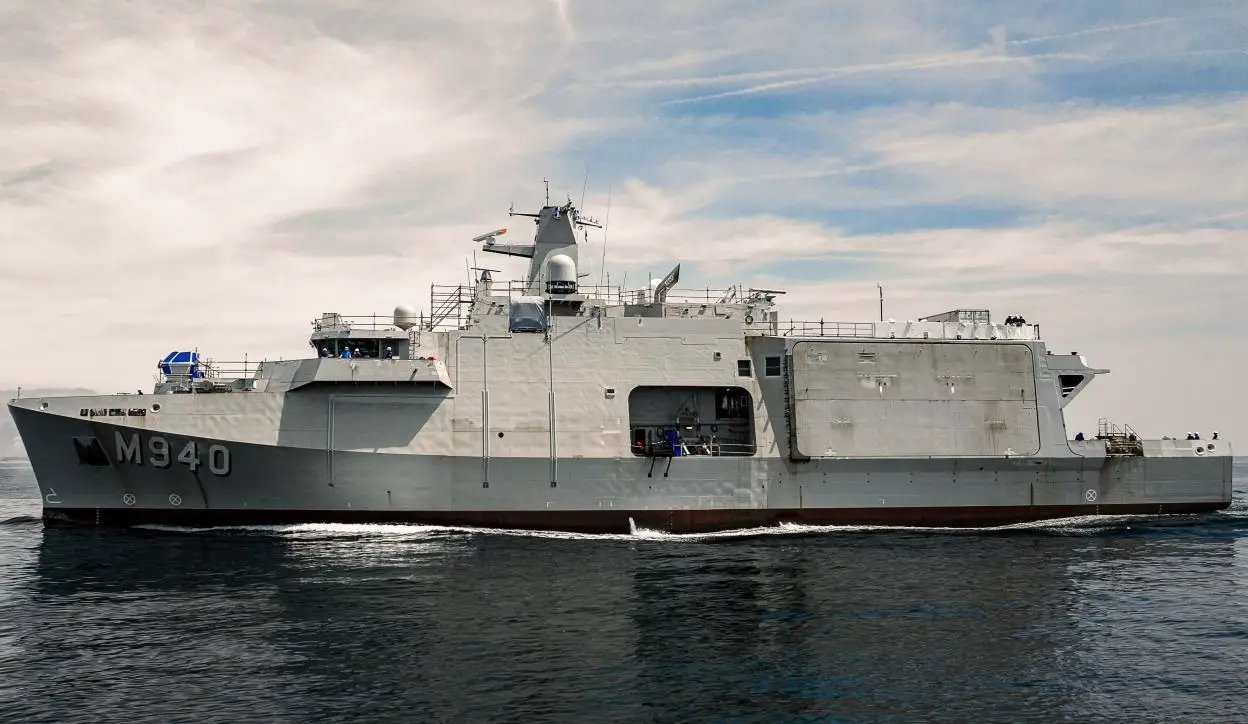The Oostende, the first of the series of mine countermeasures vessels in the Belgian-Dutch rMCM programme, intended for the Belgian Navy, began its first sea trials campaign from Concarneau on 17 July 2024. The aim is to implement and sea-test the vessel’s performance before its delivery in summer 2025. The rMCM programme is being led by Belgium Naval & Robotics, a consortium formed by Naval Group and Exail, and involves Kership (a joint venture between Piriou and Naval Group) as industrial prime contractor. During this first sea trial, the ship’s performance will be put to the test, in particular its propulsion and navigation systems. Several test campaigns will then follow to test all the systems.
Clémence Picard-Destelan, Naval Group’s onboard manager for this test campaign, said: “This first test campaign for a production ship is a technically very important and symbolically very powerful moment: it is the first time that a ship of this type has taken to sea, and this has been possible thanks to the mobilisation of our teams and our partners since the construction of this ship was launched three years ago”.
Launched in 2021, the Oostende was launched on 29 March 2023, followed by the second ship in the series, the Vlissingen, for the Royal Netherlands Navy, on 19 October 2023, and the Tournai on 24 June 2024. The fourth ship in the series, the Scheveningen, is due to be launched in December 2024. In total, seven of the twelve ships in the series are currently under construction, at various stages of completion. Delivery of the Oostende is scheduled for summer 2025 in Zeebrugge, Belgium. Deliveries of the other ships will then be staggered until mid-2030. Awarded in 2019 to Belgium Naval & Robotics, the consortium formed by Naval Group and Exail, the rMCM programme is a major component of European defence cooperation. Naval Group is responsible for ship design, overall integration, testing and commissioning of the mission system. The ships are built and assembled by Piriou, under the industrial project management of Kership, a joint venture between Naval Group and Piriou. Exail is in charge of the drones mission system. Most of these drones will be produced and maintained in Belgium.

The solution acquired by the Belgian and Dutch navies represents a complete paradigm shift in the way mines are fought, with a ship and ship’s control and mine-fighting personnel remaining at a distance from the danger (stand-off). This solution also means that the speed with which the mined area can be dealt with is ten times faster than with conventional means. These specialised mine warfare vessels will be the first to have the capacity to embark, launch or fly and reconfigure a range of surface drones (vessels of around 12 metres and 19 tonnes), underwater drones and aerial drones. The mine countermeasures vessels will use a fully robotised system to detect, classify, identify and neutralise mines. They can withstand underwater explosions and have very low acoustic, electrical and magnetic signatures, in line with the missions to be carried out.
Measuring 82.6 meters in length and 17 meters in width, these vessels displace 2,800 tons and can reach a maximum speed of 15.3 knots. With a range exceeding 3,500 nautical miles, they are well-equipped for extended missions. The crew capacity stands at 63, ensuring efficient operation and maintenance. The vessels are equipped with advanced drone capabilities, including the Exail UMISOFT System, and feature two unmanned surface vehicles (Exail Inspector 125), three autonomous underwater vehicles (A-18 with Exail UMISAS 120 sonar), and two towed sonars (T-18 with Exail UMISAS 240 sonar). Additionally, they support two Mine Identification & Disposal Systems (Exail Seascan and K-Ster C), two unmanned aerial vessels (UMS Skeldar’s V200), and an Exail influence mine sweeping system integrating five CTM magnetic modules and one PATRIA acoustic module. The embarkation capacity includes two 7-meter SOLAS rigid hull inflatable boats, and handling is facilitated by two side launch and recovery systems for surface drones or commando boats, a 15-ton dedicated rear crane, and a 3-ton overhead crane.
















